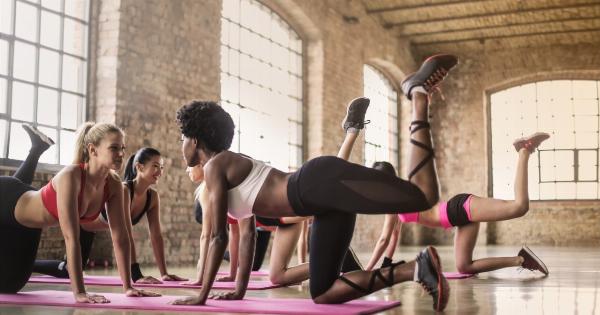Strong and injury-free shoulders are essential for a variety of activities, from weightlifting and sports to everyday tasks like lifting objects and reaching overhead.
By incorporating specific exercises into your workout routine, you can strengthen the muscles surrounding the shoulder joint, improve stability, and reduce the risk of injuries such as strains and rotator cuff tears. In this article, we will discuss six exercises that can help you develop strong and injury-free shoulders.
1. Shoulder Press
The shoulder press is a fundamental exercise for building strength and stability in the shoulders. To perform this exercise, stand with your feet shoulder-width apart and hold a barbell or dumbbells at shoulder level, palms facing forward.
Press the weight overhead until your arms are fully extended, then slowly lower the weight back down to shoulder level. Repeat for the desired number of repetitions.
2. Bent-Over Rows
Bent-over rows are an effective exercise for targeting the muscles of the upper back, including the shoulders. To perform this exercise, stand with your feet hip-width apart, knees slightly bent, and hold a barbell or dumbbells with an overhand grip.
Bend forward at the hips, keeping your back straight and core engaged. Pull the weight up towards your chest, squeezing your shoulder blades together, then lower the weight back down. Repeat for the desired number of repetitions.
3. Lateral Raises
Lateral raises target the deltoids, which are the muscles responsible for raising the arms laterally.
To perform this exercise, stand with your feet hip-width apart, knees slightly bent, and hold a dumbbell in each hand with your palms facing your thighs. With a slight bend in your elbows, raise the weights out to the sides until your arms are parallel to the floor. Slowly lower the weights back down to the starting position. Repeat for the desired number of repetitions.
4. External Rotations
External rotations help strengthen the rotator cuff muscles, which play a crucial role in shoulder stability.
To perform this exercise, stand with your feet shoulder-width apart, knees slightly bent, and hold a resistance band or light dumbbell in one hand. Bend your elbow to 90 degrees and keep it tucked against your side. Rotate your arm outward, away from your body, against the resistance of the band or dumbbell.
Slowly return to the starting position and repeat for the desired number of repetitions on each side.
5. Push-Ups
Push-ups not only engage the chest and triceps but also recruit the muscles of the shoulders for stability and support. To perform this exercise, start in a high plank position with your hands shoulder-width apart and directly below your shoulders.
Lower yourself down by bending your elbows, keeping your body in a straight line, until your chest almost touches the floor. Push yourself back up to the starting position and repeat for the desired number of repetitions.
6. Reverse Flyes
Reverse flyes effectively work the posterior deltoids and upper back muscles, helping to balance the strength and stability of the shoulders.
To perform this exercise, stand with your feet hip-width apart, knees slightly bent, and hold a dumbbell in each hand with your palms facing each other. Bend forward at the hips, keeping your back straight and core engaged. Raise the weights out to the sides, squeezing your shoulder blades together, then lower the weights back down. Repeat for the desired number of repetitions.
Conclusion
Incorporating these six exercises into your workout routine can help you develop strong and injury-free shoulders. Remember to start with light weights or resistance and focus on proper form to avoid unnecessary strain or injuries.
Gradually increase the weight or resistance as your strength and stability improve. Additionally, it is important to listen to your body and rest or consult with a healthcare professional if you experience any pain or discomfort during the exercises.
By consistently working on your shoulder strength and stability, you can improve your overall fitness and reduce the risk of shoulder injuries in the long run.






























